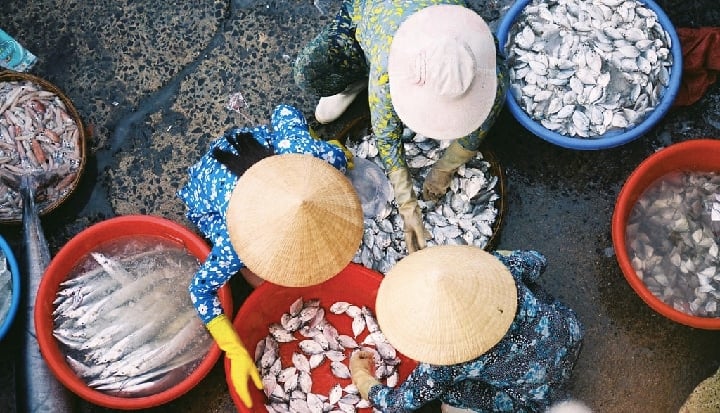The global fish and seafood sector – the world’s fastest growing food-producing industry – is at a crisis point. The narrow pursuit of profit has led not only to unsustainable growth but to the exclusion of entire communities, undermining social justice, mobility and progress.
Three countries – China, Norway and Peru – account for almost a quarter of global exports by value, according to new research, with 93 other countries sharing just 0.5 per cent of the market. And even within these countries, social, economic and political barriers limit the participation of frequently marginalized populations, including women.
Yet it is not too late to unlock and harness the broad benefits of aquatic – or blue – foods. Blue food systems have enormous potential to positively impact social justice through greater food sovereignty and self-determination, all of which is made even more important by the ongoing global food and inflation crises.
By removing the barriers that have defined the sector to date, the benefits of blue foods can be more fairly divided around the world, in turn improving global nutrition, livelihoods and equity.
Governments have a key role to play in better balancing the tension between wealth and welfare across the global seafood sector to ensure that the profits and proceeds of blue foods ultimately serve people and society at large.
At a fundamental level, policymakers must start by embedding the human right to food in national fisheries policies. This includes establishing stronger links between fishing and aquaculture, and diet-related policies to protect the right to safe and nutritious food at source. Such a step is particularly important to overcome gender inequality that leads to women missing out on the full nutritional benefits of aquatic foods because they have limited access and rights to the means of production.
For example, while Bangladesh has enshrined access to aquatic foods as a human right in its national nutrition policy, opportunities remain to extend this to production policies and ensure women engaged in fishing, farming, and post harvesting have equal rights to land and water resources, equipment and financing.
The blue foods sector can also become more just and fairer by developing more inclusive decision-making processes that support equal access to the wealth-based benefits of aquatic foods.
In Peru, for instance, the national strategy for food and nutrition includes a provision to include men and women equally, while in Liberia, both the Food and Nutrition Strategy, and the Fisheries and Aquaculture Strategy commit to engaged and equitable decision-making processes, with downward accountability.
Gambia’s nutrition policy, which clearly articulates how social barriers drive injustices and lays out a broader responsibility for change, is another positive example. This includes encouraging men to take on traditionally female roles, such as caregiving and household nutrition.
Finally, countries should also find ways to lift the economic barriers that exist between and within countries and have historically limited the wealth-generating potential of their aquatic food systems.
This might include granting small-scale fisheries and aquaculture workers preferential access to credit or exclusive access to fishing waters to help level the playing field. It might also include social welfare safety nets to allow small-scale producers to withstand shocks that might otherwise jeopardise their livelihoods and these strategies could be extended across nations.
It has long been accepted that the seafood sector is highly unequal, yet for the first time, we know precisely to what extent, and where these inequalities reflect injustices.
New research, produced through the Blue Food Assessment, sheds a light on the policies that can help lift the barriers to a fairer, more just sector.
The route towards global development, progress and dignified lives for all starts with fundamental social justice, and for many countries, it is blue foods that can balance the scales.
Christina Hicks, Lancaster Environment Centre and member of the Blue Food Assessment scientific leadership team










